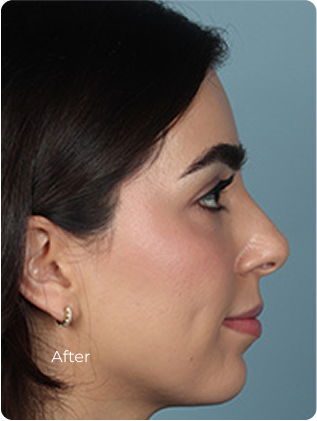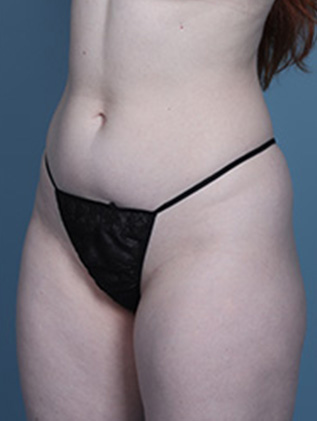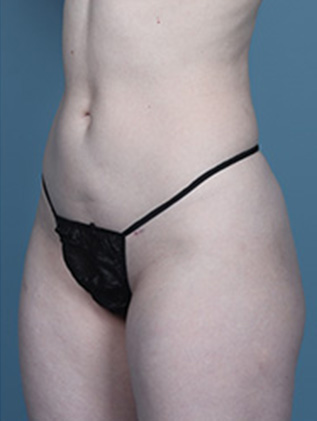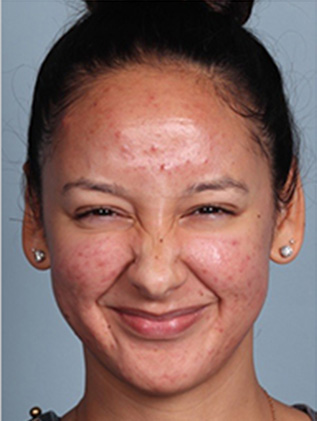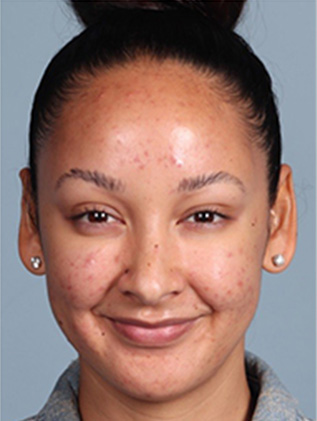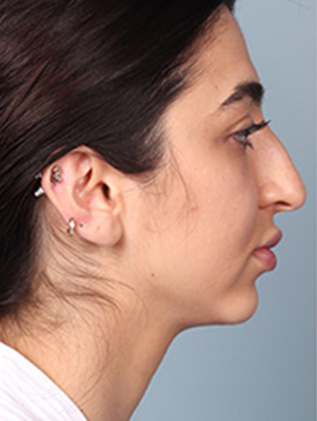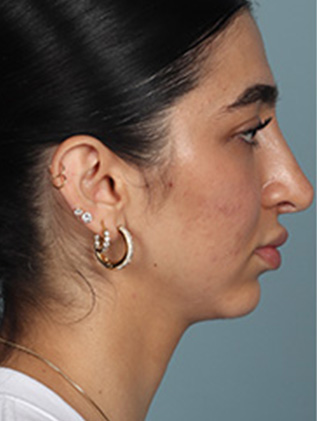The difference between a traditional facelift and a deep plane facelift is a common topic of discussion, and understandably so, because both procedures are popular and effectively address similar concerns related to facial aging.
In this article, we’ll compare these two approaches, focusing on key factors such as surgical techniques, targeted areas, expected outcomes and longevity, recovery, downtime and scarring, costs, and potential risks. But before we compare the two, we must have a general understanding of a few important notions.
Overview of the facelift surgery and the aging process
A traditional facelift remains a gold standard for reversing visible signs of aging and restoring a youthful appearance. This procedure, performed for decades, has a proven track record in addressing age-related concerns. Recently, deep-plane facelifts have gained momentum, offering an alternative approach for individuals seeking specific outcomes. The choice between a traditional facelift and a deep-plane facelift depends on various individual factors, which we’ll explore in detail in this article.
Aging is a gradual, multifaceted process influenced by genetics, lifestyle, and environmental factors like sun exposure. Over time, the skin loses elasticity, facial fat shifts or diminishes, and underlying structures weaken. This results in wrinkles, sagging, and a loss of definition, most notably across the face and neck, leading to a tired or aged appearance.
Facelift surgery, including both traditional and deep-plane techniques, addresses these age-related changes by lifting and repositioning the skin and deeper tissues. These procedures target three key layers—the skin, fat, and SMAS (superficial musculoaponeurotic system)—to create a smoother, firmer, and more youthful contour. While marketed under various names, traditional facelifts and their alternatives fundamentally work with these same foundational layers.
Surgical Techniques – Surface vs. Structural
Traditional facelift
The traditional facelift also known as SMAS facelift focuses on lifting and repositioning the SMAS layer, which lies just below the skin and extends over the midface. The procedure aims to correct sagging in the cheeks, jowls, and neck by targeting this supportive layer of tissue.
In a SMAS facelift, the surgeon strategically places incisions along the hairline, around the ear, and sometimes behind it to access the SMAS layer. They separate the skin from the underlying tissues to expose the SMAS. Afterward, the surgeon tightens or repositions this layer and, in some cases, folds or “plicates” it to enhance support.
The procedure improves the appearance of the jawline and reduces jowls by lifting the tissues vertically. The SMAS facelift focuses on the superficial layers without extensively releasing deeper retaining ligaments or addressing deeper anatomical structures.
Deep plane facelift
The deep plane facelift is an advanced surgical technique for the deeper layers of facial tissue. Unlike the traditional method focusing on the superficial layers, the deep plane facelift targets the SMAS and the underlying retaining ligaments that anchor facial tissues in place.
The surgeon strategically places incisions along the hairline, around the ear, and sometimes behind it during a deep plane facelift. The surgeon then carefully lifts the skin and moves beneath the SMAS layer. This deep dissection provides access to the retaining ligaments, which are solid connective tissues that hold facial structures in position.
Step-by-step procedure
Releasing Retaining Ligaments: The surgeon gently releases the retaining ligaments located in areas such as the cheek and jaw. These ligaments restrict the upward movement of facial tissues, and releasing them allows the surgeon to reposition the tissues effectively.
Lifting the SMAS and Platysma: The surgeon elevates and repositions the SMAS and platysma, a neck muscle that contributes to sagging. This vertical lift addresses the descent of the midface, cheeks, and jowls, restoring a youthful shape to the face.
Jawline and Neck Refinement: The surgeon removes excess fat from the neck and jawline, tightens the platysma, and secures it to the mastoid fascia behind the ear. This allows to achieve a sharply defined jawline and smooth neck contour.
Meticulous Handling of Facial Nerves: The procedure is technically demanding due to the proximity of delicate facial nerves, which control facial expressions. The surgeon meticulously preserves these nerves during the surgery to maintain their safety and functionality.
The main differences in traditional vs deep plane facelift procedures lie in:
- Targeted layer
- Incision placement
- Tissue movement
- Complexity
Targeted areas
Both the traditional and deep plane facelifts target relatively the same areas, the difference lies in longevity, depth, and extent of tissue lifting. Here are the main areas in discussion:
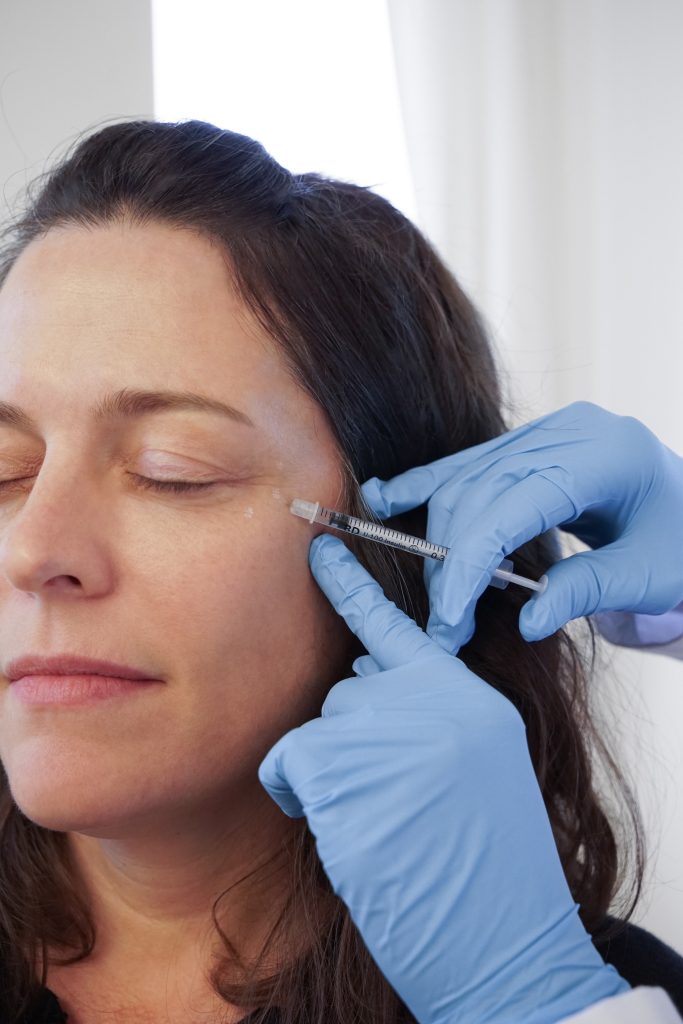
- Lower Face (Jowls) The SMAS facelift lifts the skin and underlying SMAS layer around the jawline to target sagging jowls and soften the appearance of the lower face. Like the SMAS facelift, the deep plane facelift targets sagging jowls and enhances the jawline but with a more thorough lift due to the deeper dissection of facial tissues.
- Cheeks: While SMAS facelift lifts the superficial tissue around the cheek area, repositioning it to restore youthful volume and contour, deep plane facelift not only targets the skin but also the deeper layers of the face. Repositioning the cheeks back to a youthful, high position, improves both the cheekbone area and the nasolabial folds.
- Neck: While the SMAS facelift may tighten the neck skin slightly, it typically doesn’t provide a significant improvement for neck sagging. On the other hand, the deep plane facelift addresses neck sagging in a more pronounced way by releasing the platysma muscle and repositioning the tissues to create a smoother, more defined neck contour.
Expected Outcomes and Longevity
The aging process never stops, even after getting a surgical intervention, the body will continue its natural process. The outcomes and their “life span” depend on many other individual factors; however, if we generalize them we’ll have this picture:
Traditional or SMAS facelift – A SMAS facelift generally provides natural-looking results with minimal tension on the skin. This technique is effective in addressing moderate to severe sagging of the skin and tissues, especially around the lower face and neck. The results of a SMAS facelift typically last 8 to 10 years. However, factors such as age, skin quality, and lifestyle habits like smoking or sun exposure can impact longevity. To further enhance and prolong the effects of a SMAS facelift, combining it with complementary procedures such as skin tightening treatments can improve skin texture, tone, and radiance, providing a more youthful and polished appearance.
Deep Plane Facelift – The Deep Plane facelift offers a more dramatic and long-lasting transformation, particularly in the mid-face area. Lifting the deeper layers can restore volume smooth out the face’s contours, and offer natural results. Compared to SMAS facelifts, deep Plane facelifts tend to offer longer-lasting results, with effects lasting anywhere from 10 to 15 years. The deeper nature of the procedure helps preserve the lifted position of facial structures for a longer period.
Recovery, Downtime, and Scarring
The recovery period for a deep plane facelift may be slightly longer due to the more extensive nature of the surgery. Manipulating the deeper tissues often leads to increased swelling and bruising during the first few days to weeks. This may result in a more intense initial recovery period, however the overall experience is pretty similar among the procedures.
Recovering from a facelift is a step-by-step process that requires patience and care. Here’s a detailed guide to help you understand what to anticipate during the recovery period:
Immediately After Surgery
You will wake up feeling groggy and may notice some numbness and tightness, but pain is usually minimal. Swelling occurs as the head is wrapped in a soft dressing to cushion the area. The surgeon places drains to remove excess fluid and reduce the risk of complications like seromas (fluid accumulation). For the first three days, it is essential to have someone assist you with daily tasks, such as showering, eating, and taking medications.
First Week
Cold compresses reduce swelling during the initial days. Bruising commonly occurs, especially after fat grafting. Numbness around the surgical site often persists for weeks or months. Patients manage pain with extra-strength acetaminophen or non-narcotic analgesics, avoiding narcotics to prevent nausea and vomiting. To minimize jaw strain, patients eat soft foods like yogurt, eggs, and bread while steering clear of hard or chewy foods. The surgeon replaces the head dressing with a Velcro strap to limit neck movement and protect sutures. Patients engage in light movement but avoid excessive twisting or turning of the neck.
Suture Removal
The surgeon removes sutures around the hairline, ears, and under the chin within a week if healing progresses well. Patients should continue wearing the headband to restrict neck movement and protect healing tissues. Swelling and bruising gradually subside, and warm compresses help reduce discoloration further. Patients can typically resume light exercise and normal daily activities within 2–4 weeks but should avoid strenuous activities and heavy lifting. Makeup can help camouflage any remaining bruising or discoloration.
Long-Term Healing
Minor irregularities, bumps, or tightness in the skin will resolve gradually over the next 2–6 months. Sensations like numbness or tingling usually improve with time but may take several months to fully resolve. If fat grafting was performed, the final results may take up to a year to settle completely.
During your recovery journey, you might have mixed feelings, but it’s important to:
- Avoid Anxiety: Recovery involves multiple stages, and it’s normal to see swelling, bruising, or asymmetry initially.
- Follow Your Surgeon’s Instructions: Stick to the prescribed medications, care regimen, and follow-up appointments.
- Be Patient: Full results from a facelift may take six months to a year, especially if additional procedures like fat grafting are performed.
Scarring is a natural part of any surgical procedure, and both SMAS (Superficial Musculoaponeurotic System) and deep plane facelifts involve incisions that result in scars. However, modern surgical techniques are designed to minimize their visibility and ensure they heal as discreetly as possible.
For both SMAS and deep plane facelifts, surgeons strategically place incisions along natural contours to conceal scars. They typically make the incisions around the ear, starting within the hairline near the temples, curving around the front and back of the ear, and sometimes extending slightly into the hairline behind the ear. This placement hides the scars, blending them seamlessly into the natural creases of the skin and the hairline.
For deep plane facelifts, the surgeon lifts and repositions deeper layers of tissue, requiring more extensive access. While this can mean slightly longer scars than those in a SMAS procedure, the placement, and meticulous closure techniques ensure the scars remain well-hidden and eventually fade into thin, inconspicuous lines. Moreover, they can always be covered with some make-up. For more tips on scar management and healing, check our article “Healing Surgical Scars.”
Potential Risks and Complications
Both the SMAS and deep plane facelifts carry potential risks and complications, as with any surgical procedure. However, in comparison, the deep plane facelift involves repositioning deeper structures. This also means it is a more complex procedure with specific risks including nerve injury. What makes the deep plane operation so challenging are the facial nerves. The nerves are delicate and small, requiring tremendous caution during surgery. Since they run close to the retaining ligaments, surgeons must exercise extra care when releasing these ligaments to avoid damaging the nerves. These nerves control facial expressions, and any damage could result in temporary or, in rare cases, permanent facial paralysis or asymmetry.
Regardless of the technique used, common risks include:
- Infection at the Surgical Site: Infection is a potential risk with any surgical procedure. Despite precautions like sterile techniques and antibiotics, infections can still occur at the incision sites. Symptoms of infection include redness, warmth, pain, or discharge from the incisions. In some cases, additional treatment, such as antibiotics or even surgical drainage, may be required to resolve the infection.
- Bruising and Swelling: Bruising and swelling are common after any facial surgery, including facelifts. These side effects are usually temporary, but their severity and duration can vary depending on the individual’s healing process and the extent of the procedure. Swelling may last for several weeks, with the most noticeable effects occurring in the first few days following surgery. Bruising typically fades within 2-3 weeks but can be covered with makeup once it’s no longer too tender.
- Asymmetry in Facial Appearance: Although a skilled surgeon works to create balanced and harmonious results, facial symmetry is complex, and minor asymmetries may remain post-surgery. In some cases, the difference between the two sides of the face may be more noticeable than expected. If asymmetry is significant or bothersome, corrective procedures may be needed to achieve a more balanced appearance.
Ideal Candidates for Each Procedure
The traditional SMAS facelift is often recommended for patients experiencing the early to mid-stages of facial aging, such as mild jowls, sagging around the lower face, and slight skin laxity. Patients in their 40s to early 60s, who want to reverse the initial signs of aging, tend to be ideal candidates for this procedure. The SMAS facelift is perfect for addressing moderate skin laxity and can provide natural-looking results with relatively minimal invasiveness. A key determinant for the success of the SMAS facelift is the patient’s skin elasticity. Those with firm, youthful skin will benefit from a SMAS facelift, as it primarily lifts the skin and superficial tissues.
On the other hand, the deep plane facelift is typically recommended for patients with more advanced signs of aging. Those in their 50s to 70s with substantial sagging in the mid-face, cheeks, and neck often benefit most from this technique. This procedure is well-suited for individuals with deep nasolabial folds, heavy jowls, and pronounced loss of volume in the cheeks and neck.
Patients with thinner or less elastic skin, or those who have experienced significant skin stretching, may benefit from a deep plane facelift. The procedure is ideal for individuals who need a more extensive lifting of the deeper facial layers, as the surgeon lifts not only the skin and SMAS layer but also releases the retaining ligaments that hold the facial tissues in place.
Pre-Surgical Consultation: What to Expect
Here’s what patients can expect during the initial consultation:
Medical History Review
The surgeon thoroughly reviews the patient’s medical history, including past surgeries, current medications, allergies, and overall health. The patient’s medical history helps identify conditions like chronic diseases or prior facial surgeries that may affect surgery success. Certain medications, like blood thinners, will need to be paused before surgery to reduce the risk of complications.
Lifestyle Changes and Health Optimization
The surgeon may advise certain lifestyle changes leading up to the surgery. Recommendations may include quitting smoking to improve healing, reducing complications, and adjusting exercise habits to avoid intense activity.
Imaging Studies and Photographic Documentation
The surgeon typically takes photographs of the patient’s face from various angles during the consultation to document their appearance. These images help the surgeon analyze the areas of concern and assist with planning the surgery. In some cases, imaging technology or 3D modeling may be used to simulate the potential outcomes of different facelift techniques, allowing patients to visualize the results they can expect.
Facial Analysis and Assessment
A detailed facial analysis will be conducted, where the surgeon evaluates several key factors such as skin elasticity, bone structure, fat distribution, etc.
Discussion of Desired Outcomes
A crucial part of the pre-surgical consultation is the discussion of the patient’s aesthetic goals. Patients should be encouraged to communicate clearly about their goals and have a complete understanding of what can be achieved not to have unrealistic expectations.
Surgical Technique Determination
After evaluating all of these factors, the surgeon will determine the most suitable facelift technique for the patient.
Discussion of Risks and Benefits
The surgeon will explain the risks and benefits associated with each technique. Both procedures are generally safe but carry potential risks, such as infection, nerve damage, asymmetry, and scarring.
Cost and Financial Considerations
The surgeon will explain surgery costs, including anesthesia, hospital fees, surgeon fees, and additional procedures like liposuction or fat grafting. A comprehensive cost estimate will be provided.
Costs for the Procedures
Focus on the surgeon’s qualifications and expertise, not price, as skilled surgeons charge based on expertise and time.
The deep plane facelift, while trending and highly marketable in cosmetic surgery, is a specialized technique mastered by fewer surgeons. This exclusivity often leads to higher costs. Conversely, SMAS facelifts are more traditional and widely practiced, with a broader pool of qualified surgeons. This availability typically results in lower costs for the SMAS facelift.
Ultimately, prioritize a surgeon’s skills and experience in the desired approach over focusing solely on the procedure’s price.
Overview
We compared the traditional SMAS facelift and the deep plane facelift, two popular surgical options for facial rejuvenation. Both procedures target sagging and wrinkles but differ in technique, depth, and longevity of results.
Ready to take the first step towards a more youthful and confident you? Book a consultation with Dr. Luis Macias today to determine the best facelift procedure for your aesthetic goals.



